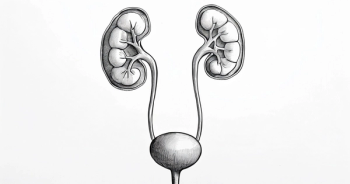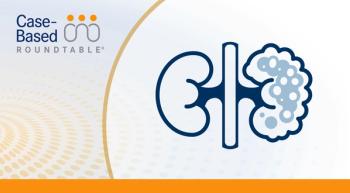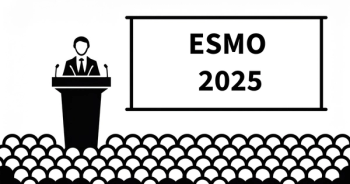
Sequencing Strategies in mRCC
Nizar M. Tannir, MD:Obviously, every institution has its own pathways, its own formulary, although many of these therapies we prescribe now require preauthorization and specialty pharmacies delivering the therapy. I think the difference between community and academic centers is that maybe a medical oncology community that does not have a high volume of patients with renal cell carcinoma, and the patient may have adverse events with a particular therapy, may have a low threshold to switch therapy to another agent. And I think there have been studies showing that first-line therapyfor example, with sunitinib or pazopanib—that time on therapy at an academic center with these agents is longer than the typical time from therapy with these agents in the community. And I think local oncologists have a tendency to, if a patient is having adverse events—rather than manage, as we mentioned, some of the strategies for adverse events with interruption, dose reduction, aggressive supportive care, because we have options, we have choices—go to a second-line before they get the maximum mileage out of therapy.
My experience is that I like to maximize time on therapy with each particular line of therapy, to give that patient the potential for the longest progression-free and improved survival. And I think this is my message to medical oncologists in the community who don’t see as many patients with renal cell carcinoma: be patient, manage the adverse events. The adverse events can be managed, and we have algorithms. We have trained our advanced practice providers to call the patient, manage the patient, and be in close contact with the patient and families to manage these adverse events. Regarding how many, I have patients at MD Anderson who are receiving their ninth line of therapy. I think those patients who end up receiving multiple lines of therapies are those patients whose disease, the biology of their renal cell carcinoma, is more indolent and they get a chance to go from one line to another. Unfortunately, there are patients, many patients unfortunately, that we lose within 1 year or even shorter time because their disease is so aggressive, relentless, and they do not respond to therapy. So, I think biology here plays a role as to the duration of therapy and how many lines a patient has seen.
And, of course, if you compare the United States versus other places, like Europe, for example, we have the luxury of having all those options available to our patients. Whereas in Europe, they cannot prescribe any agent except the way the EMA, the European Medicine Agency, approved it in that line of therapy. So, that’s why the American patients have the opportunity to receive multiple lines of therapy because we have these agents on the market. But I think it’s important also to look at the NCCN guidelines. They are guidelines that can help guide medical oncologists in the community how to choose the salvage agents for therapy.
Case Presentation
February 2016
- 70-year old female, presented to her physician with symptoms of nausea, fatigue, and weight loss
- Abdominal CT showed a 9-cm left renal tumor and a small solitary spot on the liver
- She was referred to urology and underwent left radical nephrectomy with removal of the liver lesion
- Post-surgical imaging showed multiple liver lesions
- She was then referred to medical oncology and was started on sunitinib 50 mg daily on a 4/2 schedule; stable disease was achieved within 6 weeks
- Moderate fatigue, diarrhea, and increasing severity of handfoot syndrome were managed with treatment interruption and then dose reduction to
June 2016
- Four months later the patient reported increasing fatigue, nausea, and weight loss
- Abdominal CT showed progression of her liver metastasis
- She was then switched from sunitinib to nivolumab
- The patient reported that her symptoms had improved
- Imaging at 8 weeks showed a response in the liver
- She was maintained on nivolumab without any toxicity
February 2017
- Eight months later, the patient complained of fatigue, abdominal discomfort, and weight loss; she subsequently developed back pain
- CT scan of abdomen and chest showed new liver lesions and progression of previously identified lesions
- MRI of the spine showed multiple metastatic lesions of the thoracic and lumbar vertebrae, with no evidence of cord compression
- She sought a second-opinion at an academic center
- She was subsequently switched to cabozantinib 60 mg
- Her symptoms subsided within 4 weeks
- CT and MRI imaging at 8 weeks showed response with improvement of both liver and spine metastases.
- She was maintained on cabozantinib for approximately 4 months and developed diarrhea and hand-foot skin reaction
- Her dose of cabozantinib was reduced to 40 mg daily on which she was maintained for 13 months until she developed disease progression
- At this time the patient is being considered for enrollment into a clinical trial








































